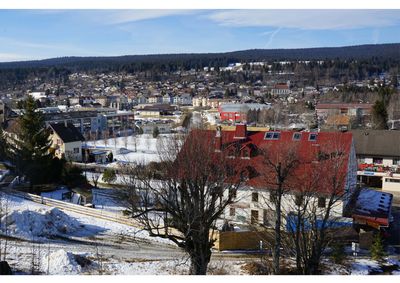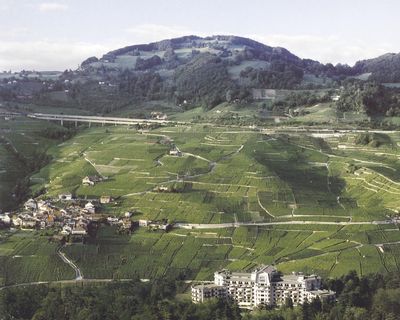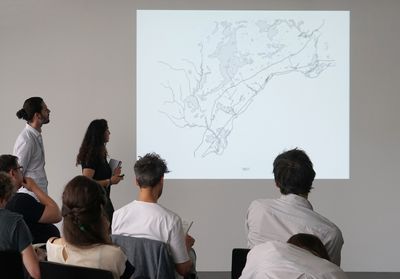Communes
Le Village Suisse Revisited
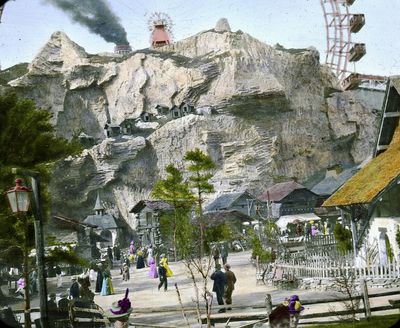
For centuries the commune has been the archetype of Swiss existence*—the basic cell, the atom of its territory. Still today, the commune (and the village) represent the basic spatial scale and order at which most traditional Swiss values are anchored (autonomy, neutrality, direct democracy, pragmatism, flair for order, etc.). This miniature territorial universe is still readable in the map of Switzerland with remarkable, if gradually eroding clarity. But in the age globalisation, many small structures, including the commune and its village, seem to loose their importance, or change beyond recognition. Urbanisation and globalisation produce structures in the territory at much larger scales than the commune: in fact, often too large to be comprehended. This is a vague space of flows of resources, people and capital, whose dimensions span the entire planet. Precisely for this reason, in this semester we will consider the meaning of locality.
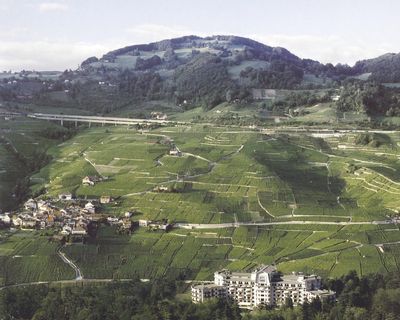
Of course, even in the time of globalisation, the power to bring about change in the territory lies not only in the hands of states, corporations and other big players; the “local” should have a role to play too. But, on the other hand, what does “local community” still mean, and what can it still produce? Can the ideas of communal life in general, and of the Swiss commune in particular, still have currency in the present time? Can projects of making things common, and of sharing resources and labor, still be articulated in meaningful ways? Could communal visions still have consequences, for social relations, for the built space, and for the organisation of territory?
In this semester, we will embrace the power of smallness—the scale of a place and of a community of people. Travelling to Lac Léman, from the lakeshores to the Jura and the Alps, we will find Swiss (and French) countryside in all of its typical forms—from the communal cell of the Mittelland, to the regular fabric of the river valleys, and to wooded alpine villages. We will study the histories and the present of these communes. We want to propose territorial and architectonic projects that take the crucial experiences of the traditional commune—social solidarity and common property—and harness them for the present and the future.
We want to design communes and villages as our “universes in miniature”—our miniature cities and urban neighborhoods. Not anymore generic and placeless urbanisation of the periphery, but vital places still based on a relation to the land.
MORE ON HOW AND WHY
The crisis of the commune and the village—their ongoing urban transformations—has been traceable in Switzerland and Europe for well over a century. Already in 1900, at the Exposition Universelle in Paris, an idealised replica of Le Village Suisse was built at the base of a Ferris wheel to entertain the modern visitor, placing the clichés of rural identity (chalets, mountains and waterfalls) at the leisure of the urban dweller. Today the process of urbanisation of the European countryside nears completion: “Agriculture does not necessarily need peasants”, observed John Berger in one of his books (Pig Earth, 1979). Industrialised agriculture is not dependent on villages to supply workforce and organise trade. One can look anywhere in Western Europe and find a remarkably low proportion of village inhabitants still working the land (around 10 percent or less). Most are oriented to cities for jobs, social services, and even food. While some villages are emptying out, others are swallowed in the periphery of metropolitan areas, or hollowed out by population change and modern spatial requirements for living, infrastructure and technology. Any traditional meaning of village and of countryside is obsolescent—countryside in general should be understood as another kind of “city.”
The Swiss commune and its urban transformation are certainly not entirely unique in Europe, and not too different from the French commune or the German Gemeinde. But its high autonomy and still high inertia to changes of all kinds make the Swiss commune a unique and fascinating case in the European frame. The form of the commune in Switzerland—the village surrounded by its land—crystalized around the XVIII century following a long historical process. This is the “universe in miniature” where all social relationships have been laid out in their basic forms—the form of land and the settlement, the organisation of production and trade, political habits, everyday life, the sense of belonging. In a uniquely Swiss experience, the power in society does not rest at the top in the hands of state, but is anchored at the lowest level of the commune. From there, it is delegated upward: the cantons and Swiss confederation are much looser structures—merely “meta-communes”. Here the locality, and the “local community” are, at least theoretically, the primary forms of society and of the physical territory.
The pressures of urbanisation and globalisation on these fine structures, and the fear they have raised in its many forms (of ongoing urban growth, of migrants, of European technocracy, and so on), have clarified an urgency to rethink once again the possible meaning of locality in the European territory.
These observations, and the exiting findings we made working on Lac Léman so far, made it clear for us, that centuries long experiences of social and territorial organising in the form of communes are once again compelling. According to Elinor Ostrom (who studied alpine communes among others), these experiences are far from anachronistic: more than 45 percent of the alpine territory is still owned by some kind of common property: by local villages, corporations or cooperatives. The commune embodies these traditions of collective or common property, and of a common pool resource management. The recovery of these experiences in our time is crucial for both the city and the countryside. We will pursue this goal by means of territorial and architectonic projects, in the concrete and paradigmatic landscapes of Switzerland.
For inspiring work on the history of Swiss commune and territory see Marcel Meili, Switzerland: An Urban Portrait, book 2.
SEMESTER PROGRAM
The semester consists of an investigative journey into the territory and intensive studio sessions with fellow students, the teaching team and guests. We value team spirit, intellectual and design curiosity and high commitment for the issues at hand. Architecture of Territory is looking for avid travellers and team workers with high motivation and independent position. Architecture of Territory’s approach enables students to work with a wide range of methods and sources pertaining to territory, including one-to-one ethnographic exploration of the territory, discussions of key texts and writing exercises, study of precedent projects, guest lectures, group debates, model building, large scale drawing techniques, book making, sessions on photography and visual art. We will start the semester by learning from history and from selected projects, while practicing a few important skills: drawing, model-making, photographing. We will then travel into the territory to find our motives and the ways of looking. Each student group will create their own project brief, and will receive our unreserved support in developing their project. We hope to have an intensive time and to be surprised by our discoveries.
